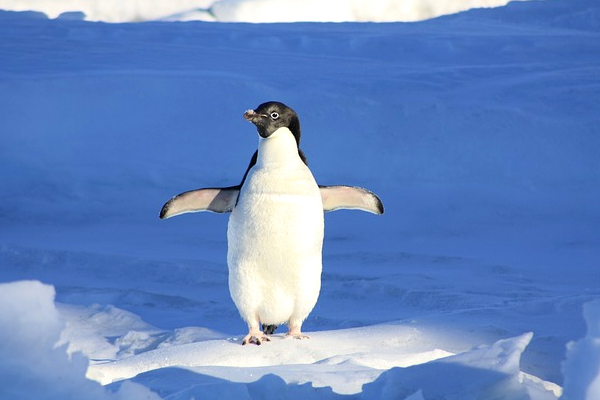U. Delaware Scientists Study Falling Adélie Penguin Populations, Antarctic Food Web

Researchers at University of Delaware are studying adélie penguins in Antarctica. (Credit: University of Delaware)
Adélie penguins, cute little creatures whose body markings give them a tuxedo year-round, are a regimented bunch. They have been found to do the same things each breeding season regardless of how the climate has changed in Antarctica. But their predictable behavior isn’t a good thing, as scientists believe their quirks may be leading their population into decline. Going along with drops in the number of Adélies, gentoo and chinstrap penguin populations have gone up.
Though a suspicion exists that their regimented activities may be playing a role in Adélie declines, scientists still can’t say for sure without hard data. To answer this question and others relating to the Antarctic food web, researchers at the University of Delaware made a trip to Biscoe Point, one of the Adélie’s main breeding grounds.
“We’ve seen a decline of Adélie penguins, while at the same time there’s been an invasion of gentoo and chinstraps,” said Matt Oliver, associate professor in U. Delaware’s College of Earth, Ocean and Environment and a principal investigator on the project. “Biscoe Point is a nice place to look at how climate change is affecting the food web.”
The penguins are just one part of the larger food web story that Oliver and other researchers from Rutgers University, Oregon State University and the University of Alaska are looking to uncover. And the main effort for studying them involves tagging them with satellite transmitters. Oliver explains that scientists with the Polar Oceans Research Group attach these to feathers on the backs of penguins who are going out to find food. When the penguins return, the transmitter packages are removed and then attached to other Adélies.

A penguin makes its way across the ice.
Much of the rest of the investigation relies on data collected by autonomous underwater vehicles, which go up and down in the water column gathering information on water temperature and the amount of phytoplankton in different layers of seawater. By cross-referencing penguin movements with positions of the small marine organisms they prey on, it’s possible for scientists to better understand how Adélie penguins find food.
There are also coastal radars in the area that help researchers map currents, as well as convergent and divergent zones in the nearby ocean.
“We’re looking at how different zones connect the food web all the way to krill and penguin,” said Oliver. “So that we can understand how the food web gets set up.”
Knowledge of these zones is important because looking at the tracking data alongside them shows which ocean flow fields the penguins are using for transport.
Most of the study has been completed and the coastal radars will stay in the water for the rest of the year, Oliver says. The fieldwork was done at Palmer Station, an ideal location because it’s where the sub-Arctic and Antarctic climates meet.
“That boundary line has been moving south as the region heats up,” said Oliver, another factor at play in diminishing Adélie populations.
But working from Palmer also allowed researchers to complete a successful public outreach component of the work. Over the course of their stay, scientists wrote updates about their work on the Project CONVERGE blog. They also held live video calls with 15 groups of school children and shared data with them for use in class projects.
Full results of the work are not yet available as the coastal radar continue to collect data in the region, but the research has already benefited understanding of the near-threatened Adélies and the changing Antarctic food web. And scientists plan to meet with students at New Jersey’s Liberty Science Center this April to share their findings.
Top image: Researchers at University of Delaware are studying Adélie penguins in Antarctica. (Credit: University of Delaware)





0 comments